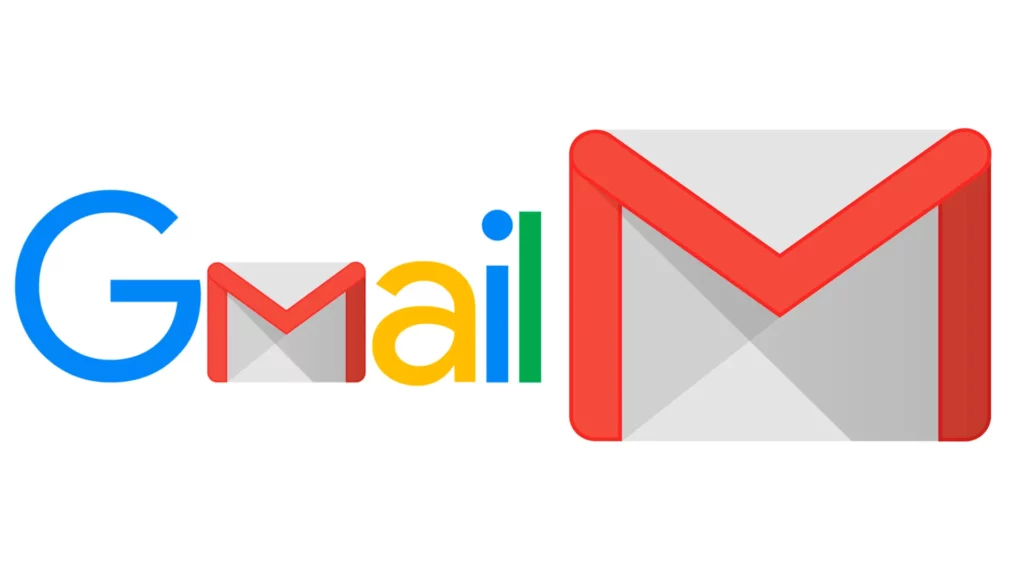Juggling classes, deadlines, and social lives is enough to make any Canadian student’s head spin.
Add on navigating the digital jungle of university life, and it’s a recipe for major email mayhem.
Don’t settle for the limitations of your school-provided inbox, or worse, that old AOL account from middle school.
It’s time to upgrade your game with a free email account in Canada that’s tailor-made for student success.
Imagine…
- No more storage panic: Gone are the days of deleting precious memories to make room for a single essay attachment.
- Professionalism on point: A clean, custom email address instantly boosts your credibility, whether applying for scholarships or internships.
- Organized like a boss: Powerful search tools and filtering options keep your inbox zen, ensuring you never miss a crucial announcement or assignment deadline.
- Accessibility across the board: Seamless mobile app integration means you can stay connected and responsive anywhere, anytime.
- Safety first: Advanced spam filtering and security features protect your privacy and keep your inbox squeaky-clean.
Free email accounts in Canada for students aren’t just a luxury; they’re an essential tool for academic and personal growth.
By investing a few minutes in choosing the right one, you’ll unlock a world of convenience, professionalism, and peace of mind – all without breaking the bank.
Why Free Email Accounts in Canada are More Than Just a Nice-to-Have for Students
Let’s face it, your university-provided email feels about as exciting as cafeteria mystery meat.
Limited storage, clunky interface, and constant reminders of its impending expiration – it’s hardly the digital haven a Canadian student thrives on.
But before you resign yourself to another year of inbox purgatory, consider this: free email accounts in Canada for students could be your gateway to academic mastery and beyond.
Here’s why ditching the dorm inbox is a no-brainer for every Canadian student:
1. Academic Lifeline:
- Professorial Communication: Imagine missing a crucial study session announcement or exam revision tip because your inbox overflowed with pizza coupons. With a reliable, free email accounts in Canada for students, staying on top of professorial updates becomes effortless. No more excuses for missed deadlines or surprise pop quizzes!
- Collaboration Central: Group projects are a staple of student life. But relying on clunky school email platforms for file sharing and teamwork can be a recipe for frustration. A free email account in Canada for students with generous storage and seamless integration with cloud storage like Google Drive or Dropbox makes collaborating a breeze.
- Scholarship & Opportunity Hub: Universities often announce scholarships, awards, and other opportunities through email blasts. Don’t let limited inbox space or unreliable school servers restrict your potential. A free email accounts in Canada for students ensures you never miss out on crucial opportunities to boost your academic journey.
2. Beyond the Campus Gates:
- Professional Polish: Imagine applying for internships or your dream job with an email address that screams “dorm room circa 2018.” A free email accounts in Canada for students with a professional-looking address instantly elevates your credibility and shows you take communication seriously.
- Networking Nirvana: Building your professional network starts early. A free email accounts in Canada for students helps you connect with fellow students, alumni, and industry professionals without the limitations of your school-provided platform.
- Future-Proofed: Your university email won’t follow you into the job market. Investing in a free email accounts in Canada for students now creates a professional and permanent digital persona that you can use throughout your career.
3. Control and Convenience:
- Storage Serenity: No more living in fear of inbox overflow. Many free email accounts in Canada offer ample storage space, giving you freedom to store important documents, emails, and attachments without worry.
- Organization Obsession: Powerful search tools and filtering options let you categorize and prioritize emails with ease. Say goodbye to endless scrolling and missed deadlines!
- Mobile Mastery: Seamless mobile app integration in most free email accounts in Canada means you can stay connected and organized on the go, whether you’re in the library, at the gym, or even on a mountain summit (studying, of course!).
4. Peace of Mind:
- Spam Slayer: Advanced spam filters in most free email accounts in Canada keep your inbox safe from unwanted junk and phishing scams. Focus on your studies, not sorting through digital garbage.
- Security Savvy: Many free email accounts in Canada for students offer two-factor authentication and other security features to protect your personal information and keep your data safe from prying eyes.
Investing in a free email account in Canada is not just about convenience; it’s about empowering yourself to be a more organized, professional, and connected student.
So, ditch the dorm inbox and take control of your digital life.
You deserve a reliable, secure, and feature-packed email platform that fuels your academic journey and sets you up for success beyond the campus walls.
And the best part?
There are dozens of fantastic free email accounts in Canada available, just waiting to be explored.
Stay tuned for the next section, where we dive into the top contenders and help you find the perfect match for your student needs!
Top Free Email Providers in Canada for Students
Choosing the right free email accounts in Canada for students is like picking the perfect backpack – it needs to be reliable, spacious, and fit your unique needs.
But with a dizzying array of options out there, how do you know where to start?
Worry not, for this section is your ultimate guide to the top contenders in the Canadian student email arena.
We’ll compare key features, storage capacities, security measures, and mobile app offerings to help you land the email account that’s a perfect match for your academic hustle.
1. Gmail (Google): The Familiar Friend

Gmail is practically synonymous with email, and for good reason.
Its intuitive interface, robust search capabilities, and seamless integration with other Google services like Docs and Drive make it a popular choice for students juggling multiple projects.
Pros:
- 15 GB of free storage: Enough space for assignments, presentations, and the occasional cat meme.
- Powerful spam filtering and virus protection: Keeps your inbox safe from unwanted junk and malware.
- Excellent mobile app: Access your email, calendar, and documents on the go.
- Seamless integration with other Google tools: Streamlines your workflow and keeps everything in one place.
Cons:
- Targeted advertising: Free accounts come with ads displayed within your inbox, which can be distracting.
- Limited customization options: The interface might feel a bit rigid for some users.
- Data collection concerns: Google collects user data for targeted advertising and personalization, which some students might find unsettling.
2. Outlook.com (Microsoft): The Organization Champion

Outlook is another heavyweight in the email world, known for its robust organizational tools and integration with Microsoft Office products.
If you’re a stickler for order and like keeping your inbox squeaky clean, Outlook might be your perfect match.
Pros:
- 15 GB of free storage: Same generous space as Gmail.
- Powerful filters and search tools: Easily categorize and find emails based on sender, keywords, and other criteria.
- Built-in calendar and to-do list: Manage your schedule and tasks directly from your inbox.
- Seamless integration with Microsoft Office: Edit and share documents directly within your email.
Cons:
- Slightly more complex interface: Might take some getting used to compared to Gmail.
- Limited mobile app functionality: Some features are missing compared to the desktop version.
- Less intuitive search: Finding specific emails might require more precise keywords or filters.
3. Yahoo Mail (Yahoo): The Classic Comeback Kid

Yahoo Mail has undergone a major facelift in recent years, emerging as a sleek and user-friendly option with some unique features.
If you’re looking for a modern email experience with a touch of nostalgia, Yahoo might be worth a try.
Pros:
- 1 TB of free storage: Practically endless space for all your academic endeavors.
- Enhanced spam filtering: Yahoo boasts a 99.9% spam detection rate, keeping your inbox clean.
- Modern interface with customization options: Personalize your inbox layout and theme.
- Integrated calendar and to-do list: Manage your schedule and tasks directly from your inbox.
Cons:
- Less robust search capabilities: Finding specific emails can be more challenging.
- Limited integration with other services: Not as seamless as Gmail or Outlook with their respective ecosystems.
- Security concerns: Yahoo has faced some data breaches in the past, raising concerns for privacy-conscious users.
4. ProtonMail: The Privacy Powerhouse

If security and data privacy are your top priorities, ProtonMail is the clear winner.
This Swiss-based provider offers end-to-end encryption and zero-knowledge architecture, making your emails virtually unhackable.
Pros:
- End-to-end encryption: Your emails are encrypted both in transit and at rest, ensuring complete privacy.
- Zero-knowledge architecture: ProtonMail doesn’t have access to your passwords or decryption keys, further enhancing security.
- Open-source software: The code behind ProtonMail is publicly available, allowing for independent security audits.
- Clean interface and user-friendly mobile app: Easy to use even for tech novices.
Cons:
- Free plan offers limited storage (500 MB) and features: Upgrading for additional space and features can be pricey.
- No calendar or to-do list integration: You’ll need to use separate tools for managing your schedule.
- Less familiar interface compared to mainstream providers: Might take some getting used to.
5. Tutanota: The Secure and Sustainable Option

Another champion of privacy, Tutanota boasts strong encryption, ad-free usage, and a generous 1GB of storage.
Its built-in calendar and encrypted contacts list add to its convenience.
However, the interface might feel less intuitive than Gmail or Outlook, and the lack of integration with other services could be a limitation for some students.
Pros:
- Strong security and privacy focus
- Built-in VPN for extra protection
- Clean and intuitive interface.
Cons:
- Limited storage in free plan
- Fewer features compared to other providers
- Less established compared to competitors.
Bonus Round:
- Zoho Mail: Offers a free plan with 5GB of storage, a user-friendly interface, and integration with other Zoho services like Docs and Calendar. However, the mobile app experience is not as polished as the web version.
- Yandex Mail: A Russian-based provider with a generous 10GB of storage and a clean interface. However, its privacy policies might raise concerns for some students, and the lack of integration with popular Canadian services could be a drawback.
Important Factors to Consider
Choosing the right free email accounts in Canada for students requires careful consideration of your priorities. Here are some key factors to ponder:
- Storage: How much email and attachments do you typically store? If you deal with large files, consider providers like Yahoo Mail or paid plans for increased storage.
- Security: How important is email privacy and security to you? ProtonMail and Tutanota offer exceptional encryption and privacy features, while Gmail and Outlook excel in spam filtering and phishing protection.
- Features: What tools do you need to stay organized and productive? Do you need calendar integration, powerful search, or offline access? Prioritize features that enhance your workflow.
- Mobile app: How heavily do you rely on mobile email access? Choose a provider with a user-friendly and feature-rich mobile app for on-the-go convenience.
- Professionalism: How important is a professional email address for internships or job applications? Certain providers like Outlook offer domain-specific addresses that appear more formal.
Remember, there’s no one-size-fits-all solution. Experiment with different providers and find the one that resonates with your needs and style.
Requirements to get a free email account for students in Canada
To obtain a free email account for students in Canada, you can follow these steps:
- Choose an email provider: Select a free email provider from the available options, such as Mail.com, Gmail, Yahoo, or Outlook.
- Create an account: Visit the chosen provider’s website and follow their instructions to create an account. You will typically need to provide your name, date of birth, and a password.
- Verify your student status: Some providers may require you to verify your student status by providing a valid student ID or acceptance letter. This is common for .edu email addresses.
- Complete the registration process: After verifying your student status, follow the remaining instructions to complete the registration process. This may include setting up two-factor authentication and creating an email signature with your name, title, and contact information.
- Start using your email account: Once your account is registered, you can start using your new email account for various purposes, such as networking, job recruitment, and accessing student discounts.
Keep in mind that the specific requirements and process may vary depending on the email provider you choose.
Always follow the instructions provided by the provider to ensure a smooth registration process.
What can and can’t you do with such accounts?
With a free email account for students in Canada, you can perform various tasks, but there may be some limitations compared to a paid email account.
Some of the things you can do with a free email account include:
- Sending and receiving emails: You can send and receive emails with your free email account, but there might be restrictions on the number of emails you can send per day or the size of the attachments.
- Accessing email on multiple devices: Many free email providers allow you to sync your email across different devices, making it easy to access your emails from anywhere.
- Using email features: Free email accounts typically come with basic features like creating folders, setting up filters, and using a junk folder. However, advanced features like email encryption, secure webmail, and POP3/IMAP support may not be available or limited.
- Storage capacity: Free email accounts usually have limited storage capacity compared to paid accounts. For example, Mail.com offers up to 65 GB of storage space for free.
- Customizing your email: You can create a custom email signature with your name, title, and contact information.
However, there are some limitations to using a free email account:
- No domain ownership: The primary limitation of an email address from a free service provider is that you don’t own the domain, which means you have limited control over it.
- Email size and attachments: There might be restrictions on the size of emails you can send or receive. For example, Workspace Email accounts have a 30 MB limit per email message, including attachments.
- Daily sending limit: Free email accounts may have a daily limit on the number of emails you can send.
- No custom domain: Free email accounts typically do not allow you to use a custom domain for your email address.
- Ads: You may have to contend with ads in your email interface, as free email accounts often come with advertising.
Despite these limitations, a free email account can still be useful for various purposes, such as networking, job recruitment, and accessing student discounts.
Read also:


